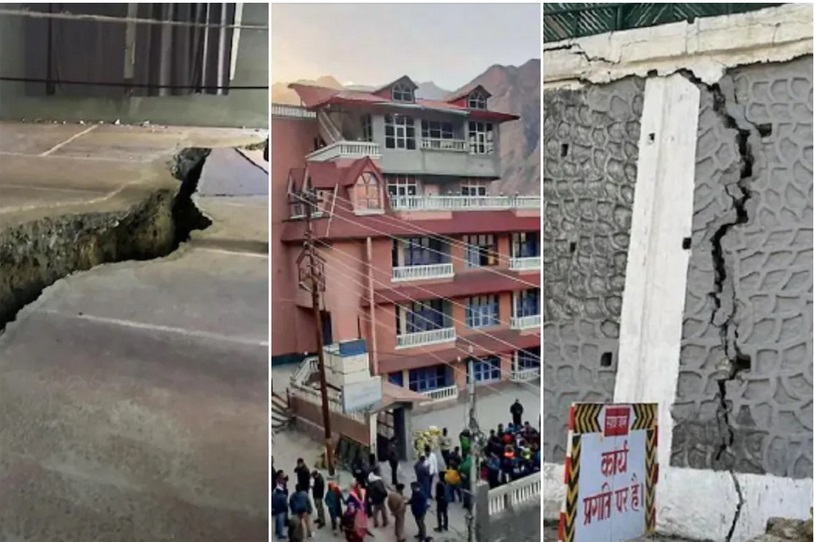
Joshimath crisis of cracks
If there’s something that defines life in the Himalayas, it is pristine beauty. However, the world’s youngest mountains have been increasingly prone to calamities in recent years. The land subsidence at the temple town of Joshimath is the latest example. Hundreds of buildings here have developed cracks that are widening with each passing day. Even the famed local ropeway is at grave risk.
The first signs of this subsidence were noticed in October 2021 when cracks were seen in a few local houses. More than 700 hundred buildings spread across all nine wards of the town have now become too risky to live in. The government has announced compensation for the affected families and all efforts are on for their rehabilitation. But serious questions loom over these efforts as not even local authorities are convinced if these attempts are enough to save the town.
The danger was in the making in the region for decades. But the way it has compounded in recent times has astounded experts. There are only but a few reasonable voices amid the raging nationwide debate on the issue. Pictures captured by ISRO’s satellites show the town has sunk by 5.4 centimeters in just 12 days. Preliminary findings suggest the process of subsidence was continuing between April and November, albeit at a slower rate. But the moot question is why it has come to such a pass.
Many environmentalists have blamed the construction of the National Thermal Power Corporation’s (NTPC) Tapovan- Vishnugad hydroelectric power project for the situation. In 2009, water seepage was reported in one of the tunnels of the project after a boring machine was stuck inside. The seepage resulted in the weakening of many underground rocks and led to the widening of the existing cracks. The flashfloods in February 2021 that ravaged the nearby Raini village lead to the massive waterlogging of some of these tunnels resulting in the widening of several of these cracks and formation of the new ones. Many experts are also questioning the official claims that blasts to build these tunnels were carried out correctly.
If at all, the Tapovan project is just the immediate cause of the current crisis. We have turned a blind eye to the impending disaster for decades. What we are witnessing in Joshimath is the result of our ignorance, apathy, and faulty policies. We have overlooked the fragile Himalayan ecological balance for short-term gains. The government’s failure to listen to alarm bells rung by several experts and agencies has led to a situation where the very existence of Joshimath is in danger.


















